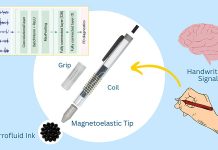
The recent development of a new mathematical model by researchers at Duke University School of Medicine and Pennsylvania State University brings a ray of hope in the fight against Alzheimer’s disease.
Unlike traditional models that focus on theoretical short-term changes at the molecular and cellular levels—changes often impossible to measure in patients—this innovative model utilizes real-world data to predict the progression of the disease in individuals.
Named the Alzheimer’s Disease Biomarker Cascade (ADBC) model, this approach was crafted using data from over 800 individuals enrolled in the Alzheimer Disease Neuroimaging Initiative (ADNI).
This initiative tracks participants’ journey from normal cognition through mild cognitive impairment to dementia, collecting a wealth of information through cognitive tests, brain scans, and fluid biomarker data over up to two decades.
What sets the ADBC model apart is its ability to integrate theory with individual biomarker data, offering personalized predictions on how Alzheimer’s could evolve and how it might respond to various treatments.
The model’s predictive power was demonstrated through its accurate forecasts of future biomarker changes in patients, based on their current biological markers.
This breakthrough suggests a paradigm shift in how we approach Alzheimer’s, moving from a one-size-fits-all perspective to a more nuanced understanding that recognizes the disease’s progression varies significantly from one person to another.
Dr. Jeffrey R. Petrella, leading the Duke University team, highlighted the model’s potential in reclassifying individuals along the Alzheimer’s clinical spectrum and tailoring treatment strategies accordingly.
Alzheimer’s disease, characterized by the presence of amyloid plaques and neurofibrillary tangles in the brain, has been a challenging frontier in medical science.
Recent advancements in medication that reduce amyloid-beta proteins and slow cognitive decline are promising, and the ADBC model could further enhance these treatments by recommending personalized therapeutic regimens.
The model identified 14 personalized parameters for each patient, reflecting the dynamics of various biomarkers related to Alzheimer’s.
These parameters—indicating growth rates, latency values, and maximum levels of biomarkers—varied significantly among individuals, aligning with their clinical diagnoses and suggesting a clinically meaningful blueprint of the disease process.
In testing, the ADBC model showcased remarkable accuracy, predicting future biomarker levels with an average error rate of just 9% across the study group.
This precision held up even at the individual level, with over 80% of patients seeing a low error rate in future biomarker predictions.
Perhaps one of the most intriguing findings from this research is the identification of two distinct clusters of patients, suggesting the existence of different “endophenotypes” of Alzheimer’s.
These endophenotypes represent underlying biological profiles that could influence the disease’s progression in diverse ways.
The team emphasizes the importance of further validating these findings in larger, more diverse patient populations.
The ADBC model’s potential in advancing personalized medicine for Alzheimer’s treatment heralds a new era in the battle against this debilitating disease, promising a future where treatments are not just reactive but predictive and tailored to each individual’s unique biological landscape.
If you care about Alzheimer’s, please read studies about the likely cause of Alzheimer’s disease , and new non-drug treatment that could help prevent Alzheimer’s.
For more information about brain health, please see recent studies about diet that may help prevent Alzheimer’s, and results showing some dementia cases could be prevented by changing these 12 things.
The research findings can be found in The Journal of Prevention of Alzheimer’s Disease.
Copyright © 2024 Knowridge Science Report. All rights reserved.



